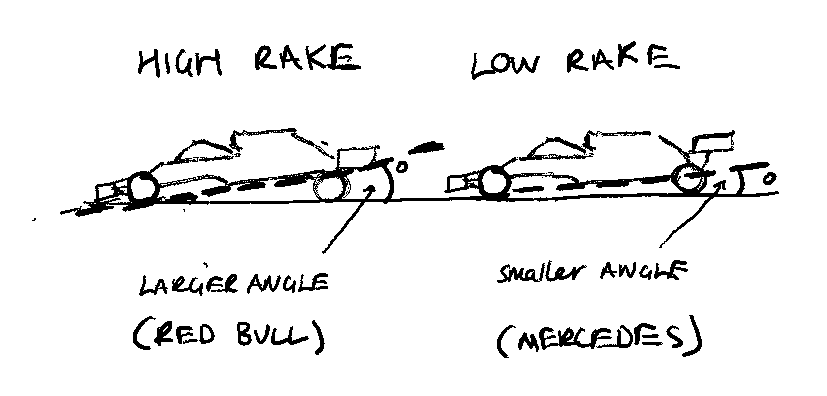This is the first post that will discuss the dynamic systems of race cars!
As a preface to the whole series, I am definitely not an expert on the topic of vehicle dynamics (that would be my flatmate..), and will be loosely introducing different ideas that could result in further research if you find it particularly interesting! This series will serve as a basic introduction to those who are keen in learning the basics. A lot of what I have learnt about race car dynamics is through University, books and online resources, which I will link throughout.
To put it simply, the term vehicle dynamics in motorsport describes how a race car responds and reacts to changes in environment, or its input parameters. This could be how the suspension of the car reacts when accelerating or braking, how the tyres form and flex over a bumpy road surface, how the chassis twists and rolls through a corner, and much much more.

Each race car will have an optimised design for all its components, serving their particular role. Therefore, race cars have widely different designs depending on what series they may be racing in. A WRC rally car has a very different design specification to that of a Formula 1 car, both at the highest level of motorsport in their respective disciplines.
Its important to remember that we will frequently want to adjust how a race car responds and interacts with its environment. For example, different circuits will have different characteristics, and we would want to adjust our race car to excel at that specific track. There may be significant changes in weather conditions that would cause you to change how the car responds. You may also want to make adjustments to the characteristics of the race car, based on the 'driving-style' of a particular driver. You can make all of these adjustments through what is known as the 'setup' of the vehicle. That is how each dynamic component in the system has been configured, and knowing how to adjust the setup of the car to a particular track or condition is often the key to success for racing teams.
Adjusting the setup of the vehicle ranges from changing the pressures of the tyres, adjust the angle of aerodynamic pieces such as front and rear wings, changing the stiffness of suspension elements, the list goes on and on. We will cover more of the specifics in later posts.

This picture above is from the pit-lane at Donington Park. Mechanics are making adjustments to the car to alter its handling characteristics - adjusting the setup. One thing they are doing here is adjusting the tyre pressures of the front tyres.
Peter Bonnington, the current Race Engineer for Lewis Hamilton at Mercedes F1 once said (linked in this video) that there is no 'Perfect' set-up, and the real task is finding the best setup you can, for your vehicle, in the amount of practice time you have. The rest of this video is also interesting and goes broadly into how a Formula 1 team may go about changing the setup of their cars at a Grand Prix. A highly recommended watch!
If you watch Formula 1, you may have heard the commentary team discuss how the setup of the cars will differ between teams, and even sometimes drivers in those teams! Each team is trying to find the optimum setup, for their specific car. No one 'setup' will work across every team, as each car has been designed differently, using different components that will react to their environment in different ways. One example of this is demonstrated with the concept of the 'rake' of the car, which has been a hot topic of discussion over the 2021 season. Whilst I will cover rake in a future post (and how a regulation change caused the amazing title fight in the 2021 formula one season), rake is simply the difference in vertical height between the front of the car and the rear of the car, shown in the diagram below. The larger your difference in front and rear ride heights, the larger the angle that the floor of the car makes with the road surface.

Rake is a fundamental design concept difference between Formula 1 teams, with Mercedes and Redbull running low and high rake cars respectively. A setup for the Mercedes cannot be implemented on the Redbull, and vice versa, due to these design concept differences. The cars will handle differently, and therefore require different setup adjustments to optimise the car for the track.
Hopefully this post has given you a general understanding of the importance of setups on a race car, that we could explore later on in more detail. The next post will give an introduction to load transfer, one of the most important concepts of the dynamic systems of race cars. If anyone has any questions about the basics of setups, get in touch with me, I'd love to chat!

Comments